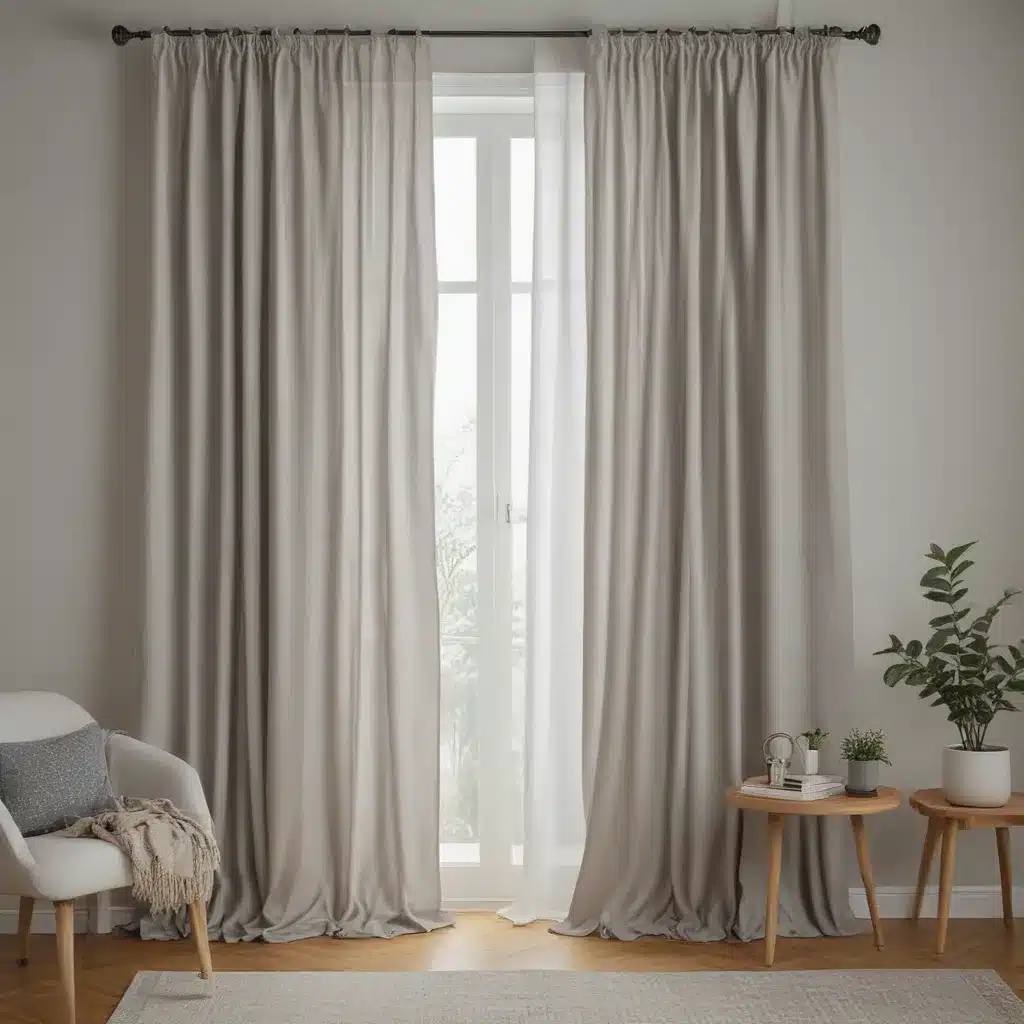As I lie in bed, the familiar cacophony of nighttime noise fills my ears – the rumble of traffic, the muffled conversations of my roommates, the occasional slam of a door. I toss and turn, willing my body to relax, but the relentless din keeps me wide awake. Sound familiar? If you’re a light sleeper like me, battling noise pollution can feel like a never-ending battle.
That is, until I discovered the power of noise-blocking curtains. These miraculous window treatments don’t just add a cozy, decorative touch to a room – they can actually transform your sleep experience. By effectively dampening outside sounds, they allow you to drift off into blissful, uninterrupted slumber. And trust me, once you experience the magic of noise-blocking curtains, there’s no going back.
The Science Behind Noise-Blocking Curtains
You might be wondering, how exactly do these curtains work their sleep-enhancing wizardry? It all comes down to the science of sound insulation. Regular curtains are designed primarily for aesthetic purposes, with little consideration given to their acoustic properties. Noise-blocking curtains, on the other hand, are engineered with specialized materials and construction techniques to absorb and reflect sound waves.
The key is the use of dense, heavy-duty fabrics like velvet, blackout lining, or even sound-dampening inserts. These materials act as a barrier, trapping sound energy within the curtain and preventing it from penetrating into your sleeping space. As one Redditor noted, “Blackout curtains are great for blocking light and sound. The thicker the fabric, the better they’ll be at blocking noise.”
But it’s not just the fabric itself – the construction of the curtains plays a crucial role as well. Noise-blocking curtains often feature multiple layers, with each layer contributing to the overall sound insulation. Some even incorporate special acoustic liners or additional insulation materials to further enhance their noise-dampening capabilities.
Choosing the Right Noise-Blocking Curtains
With so many options on the market, how do you know which noise-blocking curtains are right for you? Here are a few key considerations:
Fabric Density: The heavier and denser the fabric, the more effective it will be at blocking sound. Look for curtains made of materials like velvet, suede, or heavyweight polyester.
Curtain Thickness: Thicker curtains generally provide better sound insulation than thinner ones. Aim for curtains with a minimum thickness of 3-4 inches.
Curtain Length: For maximum noise-blocking, choose curtains that extend from ceiling to floor, with minimal gaps at the top and bottom.
Curtain Lining: Many noise-blocking curtains feature a special acoustic lining or an additional blackout lining for enhanced sound and light control.
Curtain Pleating: Curtains with tighter, more intricate pleating tend to be more effective at absorbing sound waves.
Brand Reputation: Look for well-reviewed, reputable brands that specialize in noise-blocking curtains. Home Curtains Philadelphia, for example, offers a wide selection of high-quality, sound-dampening window treatments.
Putting Noise-Blocking Curtains to the Test
When I first decided to invest in noise-blocking curtains, I was skeptical. Would they really make a noticeable difference in my sleep quality? To find out, I put them to the test in my own bedroom.
The first night, I noticed an immediate difference. As I settled into bed, the familiar hum of traffic and the muffled voices of my roommates seemed to fade into the background. Instead of tossing and turning, I found myself drifting off to sleep more quickly and staying asleep for longer stretches.
Over the next few weeks, I noticed even more benefits. My sleep felt deeper and more restorative, and I woke up feeling more rested and energized. And the best part? I no longer had to rely on earplugs or a white noise machine to block out disruptive sounds.
As sleep expert Ben Greenfield notes, “Noise-blocking headphones and earplugs may seem like a quick fix, but they can actually interfere with your natural sleep patterns. Noise-blocking curtains, on the other hand, create a peaceful, sleep-promoting environment without disrupting your circadian rhythms.”
Beyond Noise Control: The Other Benefits of Noise-Blocking Curtains
Improved sleep is just the tip of the iceberg when it comes to the benefits of noise-blocking curtains. These versatile window treatments offer a host of other advantages as well:
Enhanced Privacy: The thick, opaque fabric of noise-blocking curtains helps to create a more private, secluded space, shielding you from prying eyes and intrusive light.
Improved Temperature Control: The insulating properties of noise-blocking curtains can also help to regulate the temperature in your room, keeping it cooler in the summer and warmer in the winter.
Increased Energy Efficiency: By blocking out drafts and trapping heat or cool air, noise-blocking curtains can help to reduce your energy costs and improve the overall efficiency of your home.
Versatile Styling: Noise-blocking curtains come in a wide range of styles, colors, and patterns, allowing you to seamlessly integrate them into your existing décor and create a cozy, inviting atmosphere.
So whether you’re a light sleeper, a shift worker, or simply someone who values a peaceful, serene living environment, investing in a set of high-quality noise-blocking curtains can be a game-changer. Say goodbye to disruptive noises and hello to the blissful slumber you deserve.



